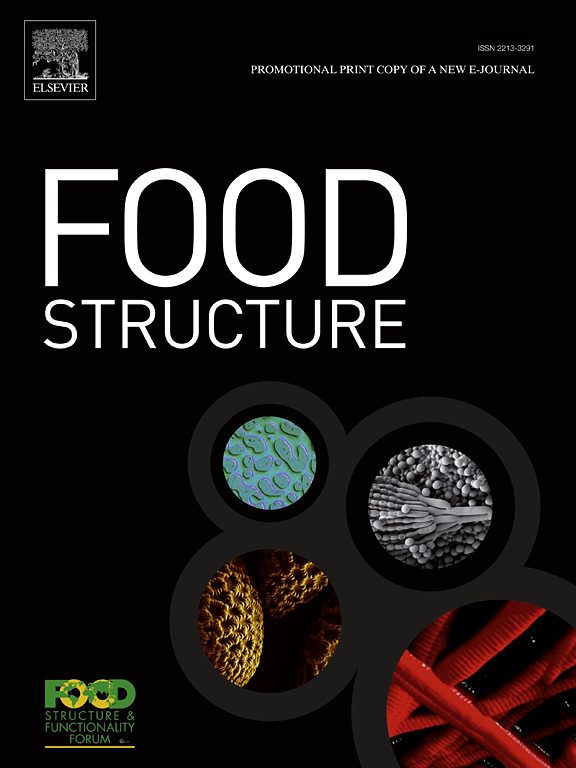Understanding the structure and functionality of third-generation rice flour snacks enriched with grape pomace flour
IF 5.6
3区 农林科学
Q1 FOOD SCIENCE & TECHNOLOGY
引用次数: 0
Abstract
Extrusion can yield expanded products or non-expanded pellets, which are later expanded in a separate thermal device to form third-generation (3 G) snacks. In both processes, ingredient effects on structure formation and functional ingredient retention are challenging. This study analyzed the effect of adding 0–15 % grape pomace flour (GPF), a by-product of the wine industry, to rice flour pellets extruded at maximum temperatures of 110 and 150 °C using twin-screw extrusion and then microwave-expanded (30 s at 480 W), to understand the relationship between microstructural parameters of 3 G snacks and their physical and textural properties, total polyphenol content (TPC), and antioxidant capacity. Results showed that adding GPF increased bulk density (from 0.12 to 0.39 g/cm3), hardness (from 29.5 to 37.59 N), and crispness, while decreasing the expansion index (from 1.83 to 1.65). Micro-CT analysis revealed that extrusion temperature did not affect microstructural parameters, but high GPF levels (15 %) reduced porosity and mean pore size, and increased wall thickness. Extrusion reduced the initial TPC in pellets by up to 52 %, but microwave expansion increased it by up to 37 %, likely due to polyphenol release from the dense glassy matrix of the pellets. These findings highlight the potential for creating nutritionally enhanced 3 G snacks using agricultural by-products like GPF and underscore the importance of a microstructural approach in the analysis.
了解第三代葡萄渣粉强化米粉小吃的结构和功能
挤压可以产生膨胀产品或非膨胀颗粒,这些颗粒后来在单独的热装置中膨胀,形成第三代(3 G)零食。在这两个过程中,成分对结构形成和功能成分保留的影响是具有挑战性的。本研究分析了在最高温度为110℃和150℃的双螺杆挤压米粉颗粒中加入0 - 15% %的葡萄渣粉(GPF),再进行微波膨胀(30 s, 480 W),对3 G零食的微观结构参数与物理质构性能、总多酚含量(TPC)和抗氧化能力的关系。结果表明:加入GPF后,容重(0.12 ~ 0.39 g/cm3)、硬度(29.5 ~ 37.59 N)和脆度均有所提高,膨胀指数(1.83 ~ 1.65)有所降低;显微ct分析显示,挤压温度对微观结构参数没有影响,但高GPF水平(15% %)降低了孔隙率和平均孔径,并增加了壁厚。挤压使颗粒中的初始TPC降低了52% %,但微波膨胀使其增加了37% %,可能是由于颗粒的致密玻璃基质释放了多酚。这些发现强调了利用GPF等农业副产品制造营养增强的3 G零食的潜力,并强调了微观结构方法在分析中的重要性。
本文章由计算机程序翻译,如有差异,请以英文原文为准。
求助全文
约1分钟内获得全文
求助全文
来源期刊

Food Structure-Netherlands
Chemical Engineering-Bioengineering
CiteScore
7.20
自引率
0.00%
发文量
48
期刊介绍:
Food Structure is the premier international forum devoted to the publication of high-quality original research on food structure. The focus of this journal is on food structure in the context of its relationship with molecular composition, processing and macroscopic properties (e.g., shelf stability, sensory properties, etc.). Manuscripts that only report qualitative findings and micrographs and that lack sound hypothesis-driven, quantitative structure-function research are not accepted. Significance of the research findings for the food science community and/or industry must also be highlighted.
 求助内容:
求助内容: 应助结果提醒方式:
应助结果提醒方式:


